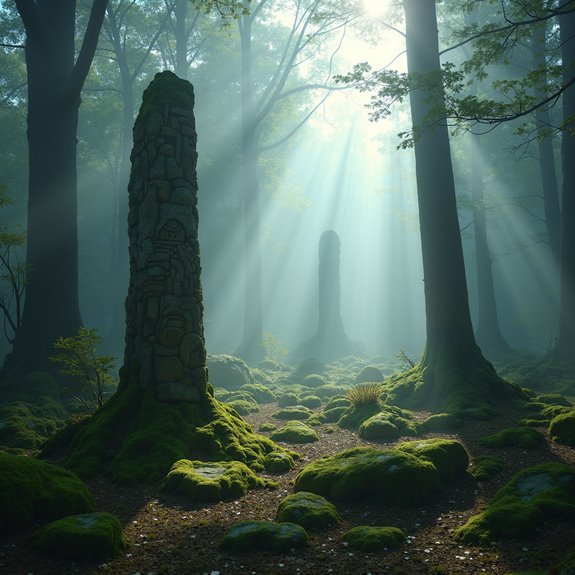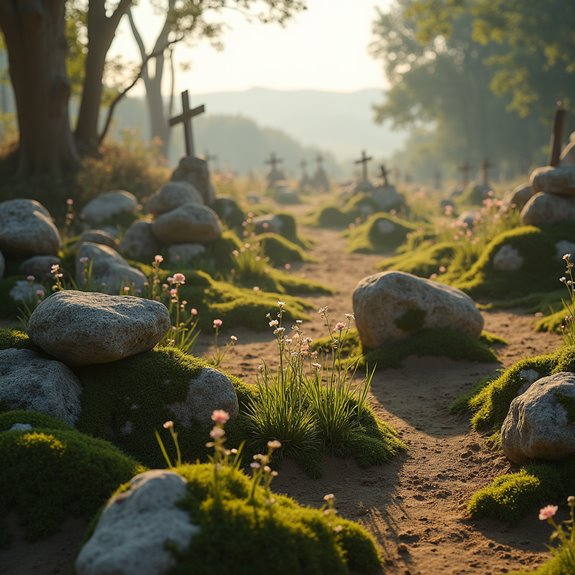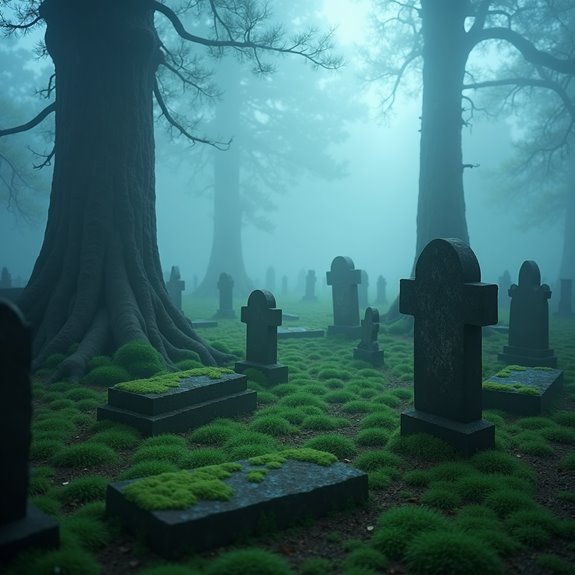Are Native Burial Grounds Really Cursed?
The notion of cursed Native burial grounds often raises eyebrows and sparks debates. Many people recount eerie experiences and unexplained phenomena linked to these sacred sites. This belief is rooted in the deep cultural ties and ancestral respect surrounding burial practices. Yet, anecdotal evidence and psychological interpretations complicate the narrative. What really lies beneath the surface of these haunting legends? The answers may reveal more about history and the human connection to the past than one might expect.
Introduction

Throughout history, many cultures have regarded burial grounds as sacred, often believing they hold a spiritual significance that transcends time. This reverence is particularly pronounced in Native American traditions, where these sites are seen not just as resting places for the dead but as domains where the past intertwines with the present. Many communities believe that disturbing or displacing these sites could provoke anger from ancestral spirits, leading to curses or misfortune. Consequently, these beliefs shape relationships within Native communities and with the land they occupy. The idea of curses linked to burial grounds frequently surfaces in folklore and popular culture, prompting many to examine the intersection of beliefs, spirituality, and the physical remnants of history.
Ancient Burial Practices’ Significance

Ancient burial practices hold deep significance across various Native cultures, reflecting their beliefs about life, death, and the spirit world. These rituals often involve unique customs, aimed at honoring the deceased and ensuring a safe passage to the afterlife. For many, the burial ground serves as a sacred space, symbolizing a connection between the living and the ancestors. The materials used, placement of the body, and accompanying offerings showcase respect and reverence, highlighting a profound understanding of life’s cycles. Additionally, these practices nurture community ties, bringing families together to remember and celebrate their shared heritage. As a result, ancient burial customs not only embody spiritual beliefs but also reinforce cultural identity, illustrating their crucial role in sustaining Native traditions.
Notable Cases or Sightings

While many Native burial grounds remain sacred and largely undisturbed, a few notable cases have emerged where intrusive activities led to unexpected sightings and experiences. In one instance, construction workers at a site in Arizona uncovered ancient bones and reported strange phenomena, such as unexplained cold spots and disembodied whispers. Similarly, a group of college students visiting a burial site in South Dakota claimed to have seen apparitions of Native individuals dressed in traditional attire. Visitors often describe an overwhelming sense of sorrow and unease at disturbed sites, suggesting a deep emotional connection to the buried. These experiences have left those involved questioning the consequences of tampering with sacred spaces, adding to the legends and narratives surrounding Native burial grounds.
Common Theories or Explanations
As people explore the phenomenon surrounding Native burial grounds, several common theories and explanations arise to make sense of the reported experiences. Some believe that disturbances to these sacred sites provoke spiritual unrest among the spirits of the deceased, leading to misfortune or hauntings. Others propose that the historical trauma associated with colonization generates an energetic residue that affects those who trespass. Additionally, skeptics argue that psychological factors, such as suggestion or the power of belief, can influence perceptions of strange occurrences. Environmental explanations also exist, suggesting that electromagnetic fields or natural phenomena may contribute to the unsettling feelings reported by visitors. Fundamentally, varied interpretations reflect a complex mix of cultural beliefs, psychological influences, and environmental factors surrounding Native burial grounds.
Frequently Asked Questions
What Are the Legal Protections for Native Burial Grounds?
Legal protections for Native burial grounds often include state and federal laws that safeguard these sites. Governments recognize cultural significance, requiring permits for disturbances and imposing penalties for unauthorized construction or desecration, ensuring respectful treatment of ancestral lands.
How Can One Respectfully Visit a Native Burial Site?
To respectfully visit a Native burial site, one should research its significance, seek permission from local tribes, show reverence, avoid disturbing the area, and follow any guidelines provided by the community to honor their ancestors.
Are There Any Documented Scientific Studies on Burial Ground Curses?
Researchers haven’t documented any scientific studies specifically targeting burial ground curses. Most findings focus on the cultural significance of burial sites, emphasizing respect and understanding rather than validating claims about curses influencing visitors.
What Should You Do if You Encounter a Burial Ground?
When someone encounters a burial ground, they should respect the site, avoid disturbing it, and leave silently. It’s important to educate others about the significance of such places and protect their cultural heritage.
How Do Modern Tribes View Ancient Burial Practices?
Modern tribes honor ancient burial practices, recognizing them as essential cultural heritage. They emphasize respect for ancestors, advocating for preservation and protection of burial sites, ensuring future generations understand their significance and maintain connections to their history.


